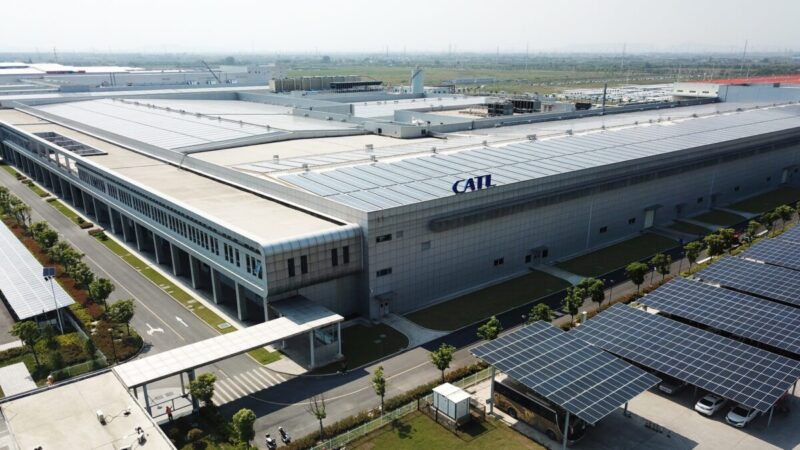China state-owned media: Concerns about CATL’s Spain battery plant lock-in are “completely unwarranted”
CATL is the world’s largest battery maker, holding a 37.9% share of the global EV battery market, significantly ahead of the second-largest company on the leaderboard, BYD, with a 17.2% share.
Their batteries are used by nearly every major automaker, including Tesla, Volkswagen, BMW, Nio, Xiaomi, Mercedes-Benz, Ford and Geely.
In September at the IAA in Munich, CATL announced its “In Europe, for Europe” strategy, highlighting its aim to localise batteries for the needs of European customers as it expands production in Europe.
CATL’s LFP battery plant in Zaragoza, Spain, which is a joint project with Stellantis, is expected to commence operation in late 2026. The plant will cover an area of 100 football pitches, and both companies will invest 4.1 billion EUR.
Financial Times (FT) reported on September 27 that CATL will bring 2,000 workers from China to set up the plant, sparking concerns about the competitiveness of European companies in the battery field.
FT highlights the threat of European technological lock-in in dependence on China, fostering a strategy of creating foreign reliance on China’s high-end manufacturing. The article quotes Stelantis executives saying that CATL doesn’t plan to transfer its know-how.
Global Times, a Chinese state-owned media outlet, responded that there is nothing to worry about as those completely unwarranted claims originate from “geopolitical anxiety”, and instead of seeing opportunities, FT plays the role of “narrow-minded anxiety monger,” not seeing technology innovation and win-win for Europe in the long-term development of new energies.
Since the early 1980s, when Western carmakers began investing in China, Beijing obliged them to enter into technology transfer agreements in joint ventures with domestic automakers. It was also common for individual companies to send European and American executives to help set up new plants.
This is not the first time CATL has faced problems. CATL aimed to establish an LFP battery plant in Michigan, USA, in collaboration with Ford. However, the announcement faced backlash from the union and the political sphere, and the project was halted in 2023 and hasn’t been discussed since then.
At that time, it was discussed that the plant would only assemble cells supplied by CATL. Assembling cells and adding BMS to them is not complicated; the “magic” and know-how when it comes to battery production lies within the cells. And those cells would still be produced by CATL in China and only imported to the US for final assembly into a battery pack.
In early 2025, the US labelled CATL a “Chinese military company,” in a move to secure the EV battery supply chain and likely close the doors to any joint venture project on US soil for the Chinese battery giant.
CATL currently operates two EV battery plants in Europe, with a third on the way. The first was opened in 2018 in Erfurt, Germany. The second was opened in 2022 in Debrecen, Hungary. The third plant, located in Spain, was announced in 2024 as a 4.1 billion EUR joint venture with Stellantis, where LFP batteries will be produced. Stellantis also plan to assemble Leapmotor vehicles in its existing plant in Zaragoza, Spain.
Updated 6/10 23:49 (China Time): Stellantis will build Leapmotor B05 and B10 in it’s existing facilities in Spain.




